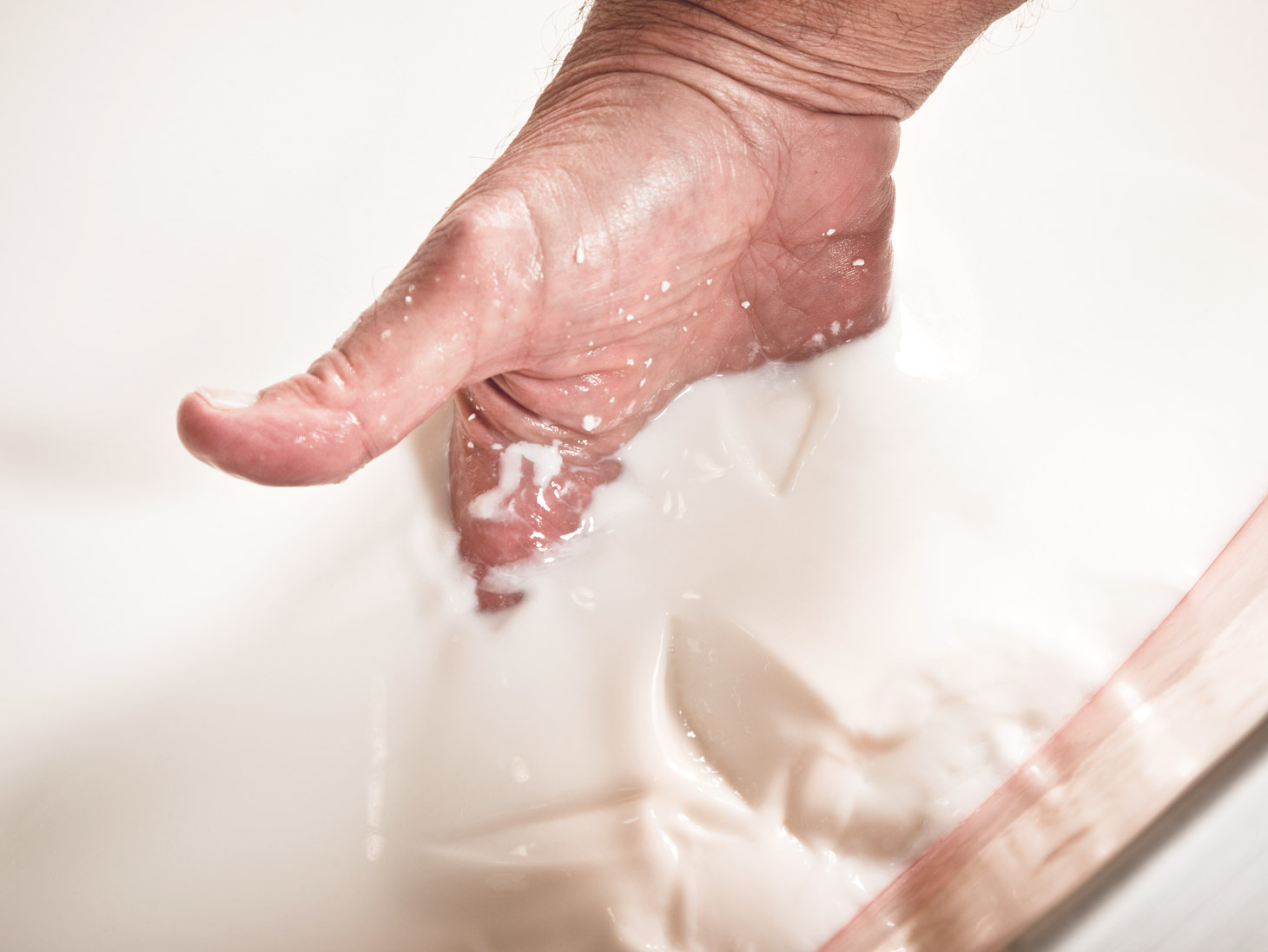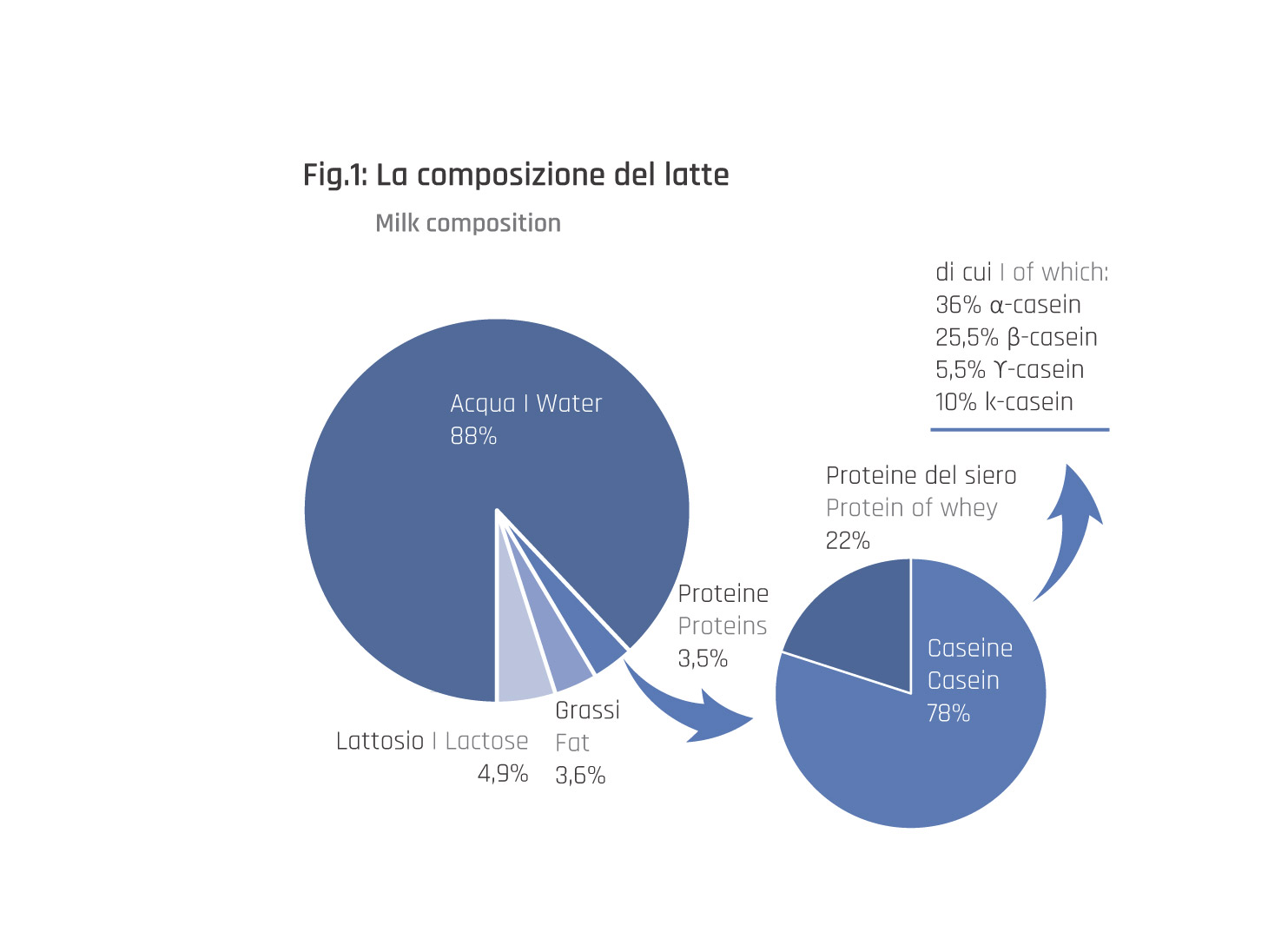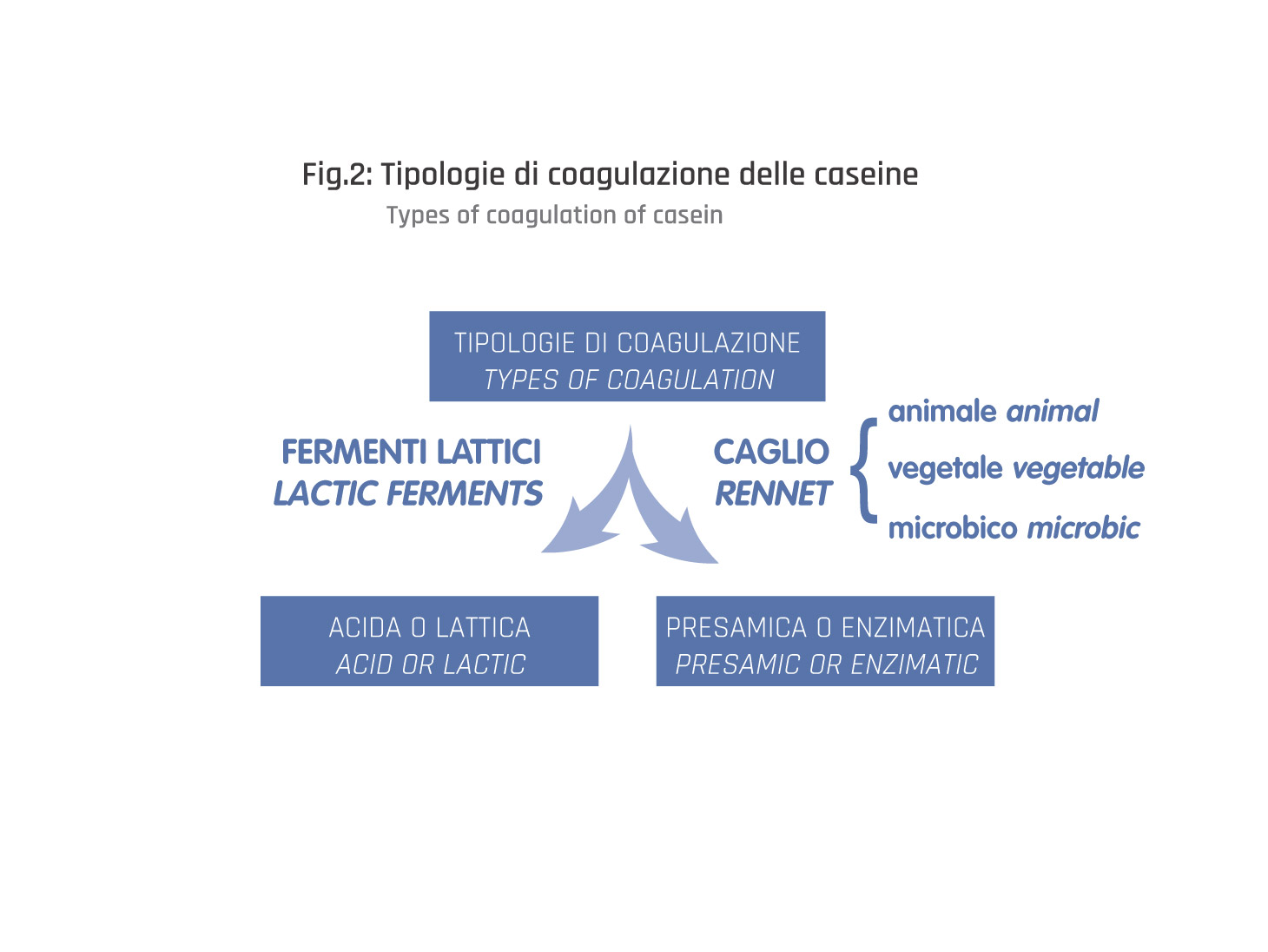
Coagulation
Protein coagulation is the basis for processing milk into cheese and could be considered essentially a method of preserving milk.
Technically it is a process through which proteins and fats (the solid part of the milk) are separated from the whey with lactose and salts (the liquid part).
To address the issue of coagulation, we therefore need to deepen two topics:
- milk protein and in particular casein from which the coagulation depends
- types of coagulation, acid and with rennet, with a focus on different types of rennet, to better understand differences.
The rennet acts on milk proteins, making the caseins coagulate, and in some cases on fats, but never on sugars: so there is no link between the use of a type of rennet and the amount of lactose present in the cheese.

Casein
First of all we have to define how casein is made. The casein is made up of micelles (protein aggregates) which are in turn made up of sub-micelles linked together.
Caseins are phosphoproteins or proteins plus phosphorus. Phosphoric groups have a negative electrical charge and are bound to calcium or magnesium that have a positive charge. In milk there are 5 fractions of caseins: beta casein, alfa-s1 casein, alfa-s2 casein, gamma casein (which comes from beta) and k-casein. These have a disordered structure and, with the exception of the k-casein, they are all hydrophobic: in an aqueous solution, e.g. milk, they tend to join forming micelles where different substances (mineral calcium, enzymes and more) are trapped. The alpha and beta caseins, which are strongly hydrophobic, are arranged inside, while the k-casein is distributed with the hydrophobic part towards the inside and the hydrophilic part towards the outside, thus giving stability to the caseinic micelle.
Types of coagulation
The cheesemaker chooses the type of coagulation depending on the type of cheese that he wants to produce and the characteristics of the milk that will be processed. Often mixed coagulations are used, in which the enzymatic coagulation is combined with the fermentation processes.
The acid or lactic coagulation starts thanks to the increase in acidity of the milk and is caused by lactic ferments, which may be naturally present in the milk or added. Added ferments can be natural ones (sourdough) or selected in the laboratory (starter), in this last case especially if milk is pasteurized. When the milk reaches the pH value of 4.6 (acid) the micelles lose their negative charge and start to interact with each other, joining together, separating solid from liquid and creating a gelatinous consistency clot that “holds” the fat globules. Cheeses obtained with this type of coagulation dry quickly during aging and are generally eaten fresh, such as robiola.
The presamic or enzymatic coagulation is instead activated by an enzyme, the chymosin, present in the rennet. The enzyme cuts the chain of k-casein breaking the fraction k, which guaranteed the stability of the micelles, which as a consequence, become unstable. At this point the calcium, thanks to its positive charge, creates bridges between the micelles, which start to aggregate, passing to a solid state, in the form of a gel. In other words, thanks to the combined action of enzymes, acidity, calcium and temperature (30-37° C), the casein precipitates, which gives rise to a coagulum (curd). The coagulum contracts spontaneously like a sponge (syneresis) and expels the liquid trapped in the gel (serum) from the mass, holding back, as in a dense network, a part of other proteins and fat. In the whey remain: lactose, whey proteins, salts and a small amount of fat.

Type of rennet
The enzymes used for presamic coagulation can have three origin: animal, vegetable and microbic.
(1) Animal origin enzymes
The term “rennet” is defined by the digestive enzymes obtained from the stomach of calves, goat, lambs, pigs or chickens. The rennet has a fundamental role in coagulation but can also influence the taste of the cheese according to the enzymes it contains:
- kinase or chymosin: it is the specific enzyme of coagulation, more present in the stomach (abomasum) of ruminants
- pepsin: this enzyme also acts on k-casein and causes a greater proteolytic activity (protein digestion) during maturation, which also influences the organoleptic characteristics of the cheese; it is obtained from the stomach of adult cattle, from pigs or chickens
- lipase: is a protein that acts on fats, releasing fatty acids responsible for the aroma of cheese, including spiciness; it is present above all in lamb and goat kid rennet.
The rennet is available in different formats: paste, powder or liquid. Generally goat kid or lamb rennet are used in paste whereas calf rennet is usually liquid.
(2) Vegetable origin enzymes
They are obtained from plant flowers and in particular from Cynara Cardunculus (cardo), even if historically fig twigs, chopped thyme, gallium or green pine nuts were also used.The Romans used them to obtain mainly soft cheeses that were consumed shortly. Today they are also used for the production of cheeses to be matured. The use of vegetable rennet is still maintained in the production of some traditional cheeses in Italy, Spain, Portugal and Northern Europe and gives to the cheeses a slightly herbaceous aroma. On the label the “vegetable rennet” is declared and highlighted because it satisfies the demand of vegetarian consumers, who do not usually eat cheeses with animal rennet.
(3) Microbic origin enzymes
They are obtained from coltures of microorganisms (molds) that produce proteases, enzymes with coagulant action similar to that of rennet. They generally have a good proteolytic activity during cheese maturation. Also the “microbic rennet” is declared on the label because it is accepted by vegetarian consumers.
The choice of the type of rennet to be used is no longer exclusively linked to technological aspects, but must take into account how the taste of cheese is influenced and above all how the choices of a part of consumers are changing.Some customers may choose to buy one cheese rather than another depending on the type of rennet used and we must be able to meet this type of requests.
Here, few cheeses classified by type of coagulation (different from the most common ones with calf rennet):
Lactic coagulation: Robiola di Roccavernao DOP; Tommasino di Capra Biologico; Rocchetta Alta Langa
Presamic coagulation with goat kid rennet: Pecorino Tumarrano; Pecorino Maiorano fresco; Pecorino Maiorano semiduro
Presamic coagulation with lamb rennet: Formaggio Canestrato; Primo Sale con Peperoncino; Pecorino Formano biologico
Presamic coagulation with pork rennet: Pecorino di Farindola
Presamic coagulation with vegetable rennet: Pecorino delle Balze Volterrane DOP biologico; Re Nero; Gran Kinara, L'Ottavio Kinara; Pecorino Fior di Natura fresco
Presamic coagulation with microbic rennet: Caciotta di Capra biologica; Primo Sale di Capra biologico; Robiola di Capra biologica; Stilton Colston Bassett



